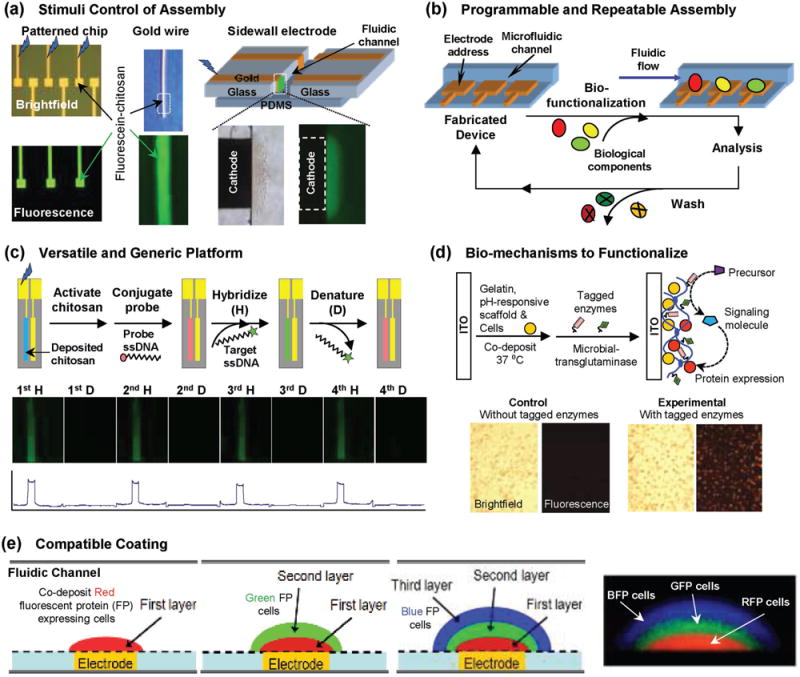Figure 5.

Broad capabilities enabled by enlisting biological materials and mechanisms to biofabricate sensor coatings. Reproduced with permission.[127] Copyright 2015, Elsevier. (a) Stimuli-responsive self-assembly allows simple, rapid and reagentless assembly of the sensor coating. (b) Reversible coating mechanisms allow generic and re-usable electronic systems to be fabricated while application-specific coatings can be applied on-demand. (c) Electrodeposited coatings can be functionalized using diverse methods (e.g., chemical conjugation to create a nucleic acid hybridization assay). Reproduced with permission.[121] Copyright 2004, American Chemical Society. (d) Enzymes can be enlisted to confer functionality. Reproduced with permission.[124] (e) Compatibility of assembly mechanisms and coating systems allows integration of complex cell-based functionalities. Reproduced with permission.[125] Adapted with permission.[180] Copyright 2013, The Royal Society of Chemistry.
